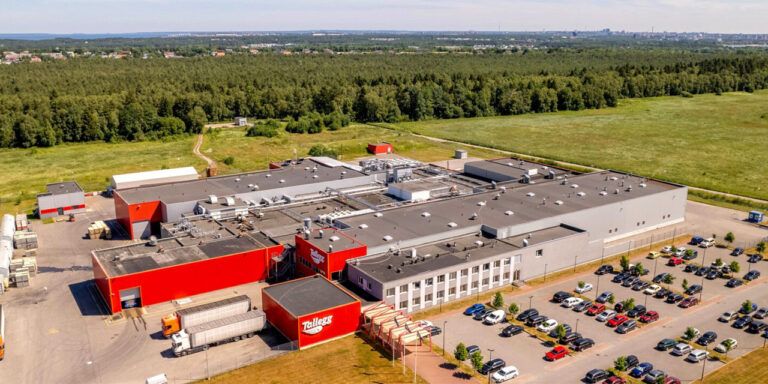Inventory optimization: The key to improving efficiency, customer satisfaction, and your bottom line
Apr 12, 2024 • 12 min
Inventory inefficiency is the underlying problem of a catalog of supply chain challenges. Inventory that is misaligned with demand derails network operations, ties up working capital in costly overstock, and loses customers low availability — and all amid increasing competition.
Managing inventory levels that meet customer demand efficiently requires an honest assessment of existing roadblocks, clearly defined goals, and a carefully considered roadmap.
To illustrate the challenges, best practices, and benefits of inventory optimization, let’s follow Tori, an inventory analyst, as she implements a new optimization strategy.
What is inventory optimization?
Inventory optimization is an efficiency-driving process that manages and positions inventory levels to satisfy customer demand at minimum cost. Optimization has become critical as companies navigate increasingly complex global supplier networks, volatile consumer demand, and rising storage costs. The ability to precisely balance inventory across locations can mean the difference between leading the market and losing customers to more efficient competitors.
In the case of Tori, achieving inventory optimization requires a strategy and solution that will get the right amount of inventory to the right place at the right time.
With tools like hyper-accurate, AI-driven forecasts and automated planning software, Tori’s organization can save money and drive customer satisfaction while avoiding overstock, spoilage, and lost sales.
Inventory management vs. inventory optimization
A big contributor to Tori’s inventory struggles involves the interplay between optimization and management.
Inventory management handles the day-to-day tasks that keep products flowing through your supply chain. It involves tracking on-hand stock, reordering items when levels get low, and ensuring orders are fulfilled on time. Practitioners focus on the immediate logistics of storing, moving, and selling goods so there’s always enough inventory to meet customer demands.
Inventory optimization, on the other hand, takes a more strategic and data-driven approach. It aims to position and balance stock levels across the entire network to meet demand efficiently while minimizing costs. By analyzing sales trends, forecasting demand, and evaluating supply constraints, inventory optimization helps companies eliminate wasteful overstock, avoid stockouts, and maximize overall profitability.
Tori’s organization — like many others — has focused historically on inventory management, but a lack of optimization strategy has prevented them from transforming their operations. She aims to tie management best practices and optimization tactics together to achieve next-level supply chain performance.
The 7 benefits of inventory optimization
Tori has recognized a few troubling situations within her supply chain. In some locations, sales and profit are low – despite high inventory levels. In others, stores are losing sales due to low availability. Her teams are running into bottlenecks along the supply chain from suppliers to stores, and she needs a way to move inventory smoothly through the distribution network. Plus, current inventory levels require a lot of working capital, restricting network expansion and narrowing profit margins.
Tori needs an inventory optimization solution that will help her achieve:
- Better availability and higher customer satisfaction: Smart inventory positioning ensures products are on shelves when customers need them. This keeps customers happy, improving brand loyalty and honing the company’s competitive edge.
- Improved profitability: By balancing inventory levels, teams maximize sell-through while investing less working capital in inventory, widening their profit margins.
- ROI reinvestment opportunities: Increased profitability and more flexible working capital can be used to fuel future business growth and invest in product development or network expansions.
- Reduced waste: By knowing how much inventory needs to be where, planners can pinpoint and eliminate overstock for more sustainable supply chains.
- Enhanced visibility: Interdepartmental communication and a clear, network-wide view of inventory help planners align with other operations and measure the impact of business decisions and market fluctuations on demand.
- Reduced operational costs: With AI delivering rapid, data-driven insights, teams balance inventory needs and costs with available supply, labor, storage, and space.
- Better scalability: More efficient use of inventory helps companies scale to meet the demands of expanding distribution networks and changing business requirements.
This all sounds good, but where should Tori start?
The challenges hampering inventory optimization
First, Tori needs to consider the roadblocks within her own organization as well as challenges from the industry at large.
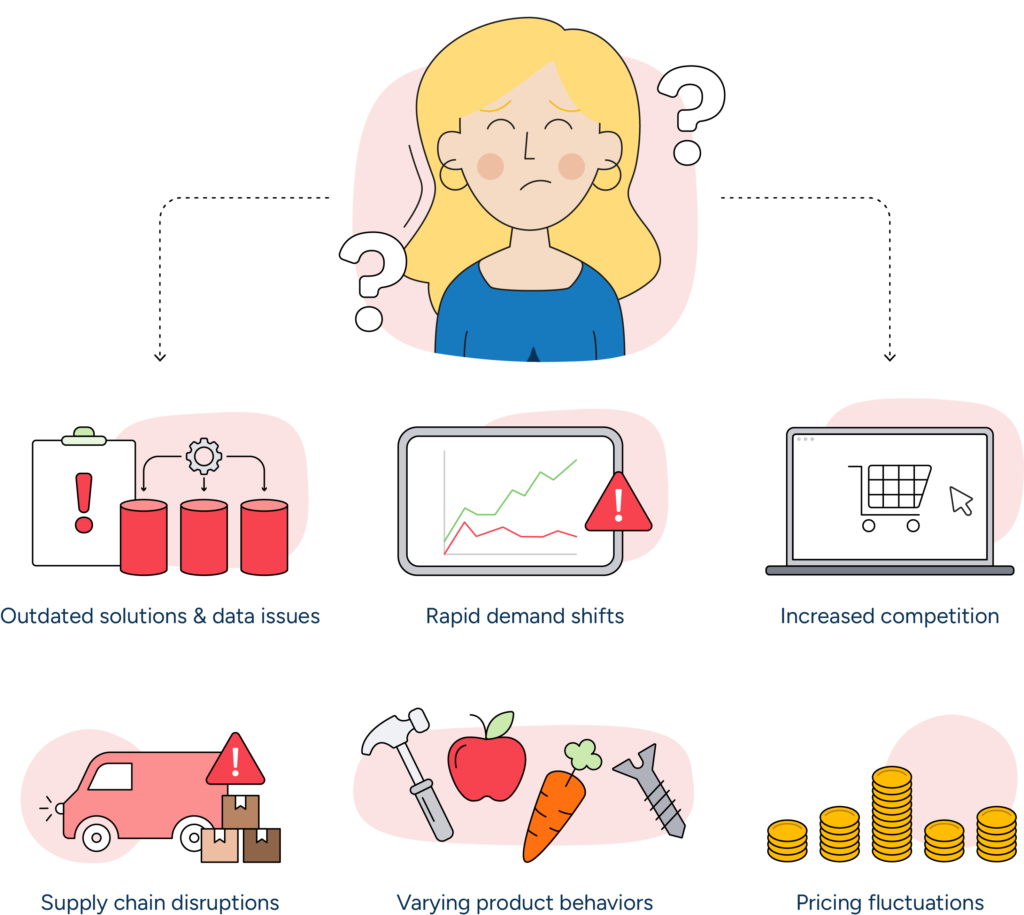
Legacy systems and data issues
Proper inventory optimization requires up-to-date, accurate data and visibility across the enterprise. But many companies are hobbled by outdated legacy planning systems that make it difficult to collect, analyze, and disseminate information.
Without end-to-end visibility, Tori’s team is siloed. Lack of data makes forecasting demand difficult and increases the risk of inventory-related costs.
Tori needs a modern solution designed to pull data from the entire supply chain, process it quickly, and deliver actionable insights across operations.
READ MORE: Supply chain transformation: The complete guide
Fast-moving demand shifts
In the world of supply shortages and social media trends, consumer behavior can shift suddenly and dramatically. Tori and her team cannot rely on sales history alone for an accurate forecast.
She needs a system that can quickly and accurately integrate a variety of demand factors into her forecast calculations.
Increased competition
Consumers are spoiled for choice. In the age of omnichannel, BOPIS, curbside pick-up, and two-day delivery, one bad shopping experience can mean losing a customer to a competitor for good.
Tori needs to increase availability to stay competitive and boost customer loyalty without risking costly overstock.
Supply chain disruptions
From extreme weather to geopolitical upheaval, the supply chain is no stranger to disruptions. These events can rapidly deplete supply or delay fulfillment.
Tori needs a planning solution that will allow her to adapt to changing market conditions, adjust forecasts quickly, and reposition inventory strategically.
Tricky product behaviors
Tori’s product portfolio contains varying demand patterns and shelf lives. Some products are perishable and move quickly, like fresh goods. Grocery stores often struggle with fresh inventory planning due to inventory shrink and poor (or nonexistent) inventory data. Plus, the lack of expiration dates for some fresh products leads to poorly balanced stock and uneven spoilage.
Other products are slow-moving, “long tail” items that experience intermittent demand. For example, DIY retailers may have a selection of lawnmowers that experience an uptick in demand when spring arrives. However, that demand is spread over multiple SKUs, meaning demand for a specific lawnmower may be rather low. This cannibalization can make it difficult to stock the product variety needed to satisfy picky shoppers without overstocking slow-moving items.
Both product types are affected by regional consumer behaviors, promotions, and seasonality. Often, each product type requires its own inventory management strategy, further complicating optimization efforts. Plus, the sheer number of SKUs complicates the planning process.
Tori needs a way to measure the impact of unique demand behaviors and promotional activities to determine the optimal amount of inventory for each product at each location.
READ MORE: How to improve fresh food inventory management
Pricing
Pricing can change drastically and cause dramatic shifts in demand. The price of an item may skyrocket if its supply suddenly plummets. The price may come down if planners are running promotions to drive a sudden spike in sales and avoid spoilage or obsolescence.
Tori needs to be able to respond to price elasticity by having visibility into supplier constraints, pricing, and promotions.
The hallmarks of a successful inventory optimization strategy
By assessing these challenges, Tori can design an optimization approach with specific goals in mind. She identifies six high-level goals that will guide her tactical strategy. She needs:
- A unified platform that increases visibility and gathers data from departments and partners across the organization for accurate, agile inventory planning.
- Granular, accurate forecasts that incorporate a wealth of demand data to drive efficient inventory use at each location.
- Cost-effective inventory levels and safety stock calculations that reduce inventory and avoid overstocks without resulting in lost sales.
- Strategically positioned and allocated inventory that meets network-wide demand, while taking advantage of bulk orders to lower costs.
- Optimized warehouse and store capacity that smooths replenishment operations while alleviating pressure on labor constraints and reducing bottlenecks.
- Future-proof capabilities that ensure scalability and justify the investment in a long-term solution.
With these goals in mind, Tori has the direction she needs to implement the best practices and technological solutions to optimize her inventory.
Inventory optimization techniques and best practices
So how does Tori make these goals a reality?
Unified data and cross-departmental planning
By having one platform that unifies data, Tori increases visibility along her end-to-end supply chain. This platform operates using a single data pool that compiles, formats, and processes data from across the business so that all functions are using the same up-to-date information for their business decisions.
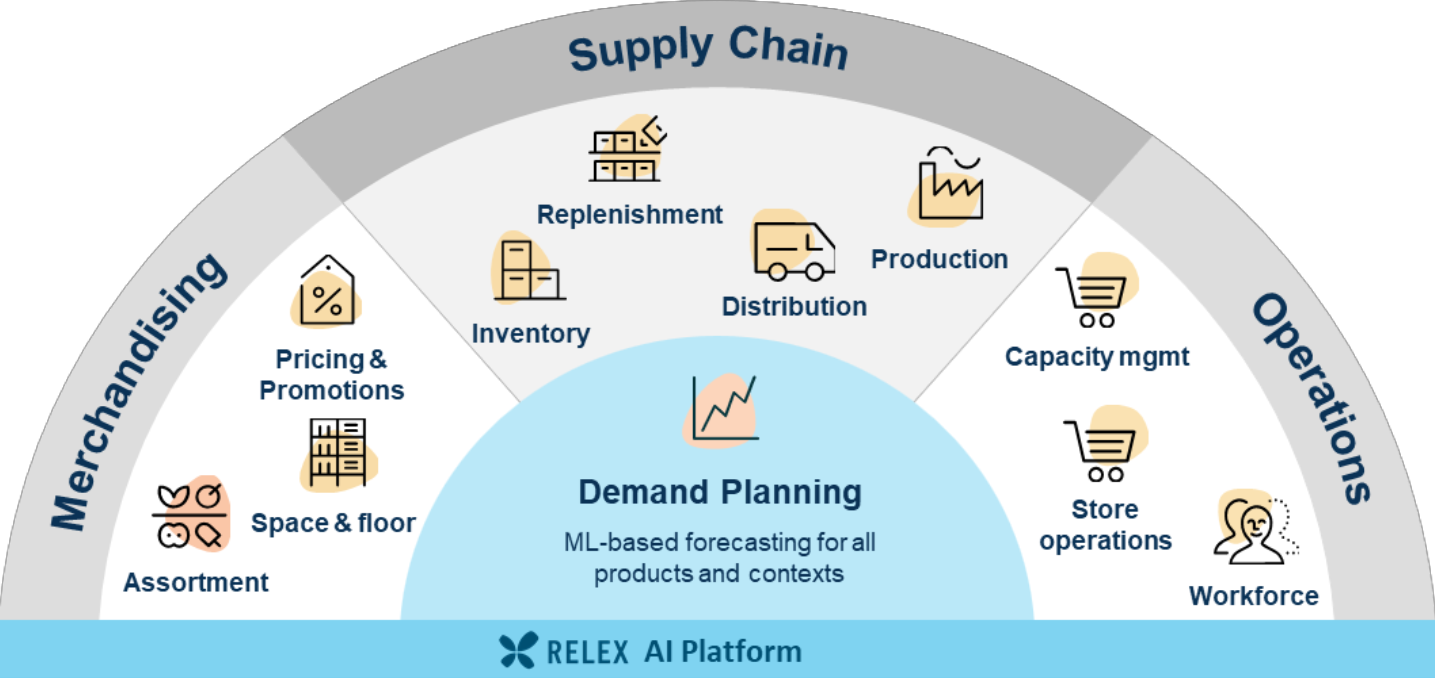
The solution also enables cross-functional collaboration. By seamlessly incorporating space, inventory, purchasing price, and operations considerations into the replenishment process, it provides a more accurate, nuanced picture of inventory levels and requirements.
Collaboration with upstream and downstream trading partners
From the retail perspective, Tori can bolster supplier relationships by sharing her forecast and other critical information with suppliers. In this way, she and her supply chain partners can align business objectives, increase end-to-end planning accuracy, improve efficiency, and circumvent possible disruptions.
From a CPG point of view, Tori can also integrate external vendor information into her process (e.g., how much a vendor is planning to order or what promotions a retailer is running) for greater visibility. With this information, Tori can pass along bill of material insights and forecast expectations to suppliers and ensure she has enough inventory on hand to fulfill orders.
AI-driven demand forecasting
A machine learning-based forecast underpins the entire supply chain planning process, absorbing near real-time data and accounting for a range of demand-influencing factors (e.g., seasonality, weather, promotions, etc.).

Machine learning offers a granular look at product demand for each store or warehouse so Tori’s team can determine how much of each product should be in each location — even for fresh products with intraday forecasting and slow movers with intermittent demand.
For instance, suppose Tori is planning products in her fresh category.
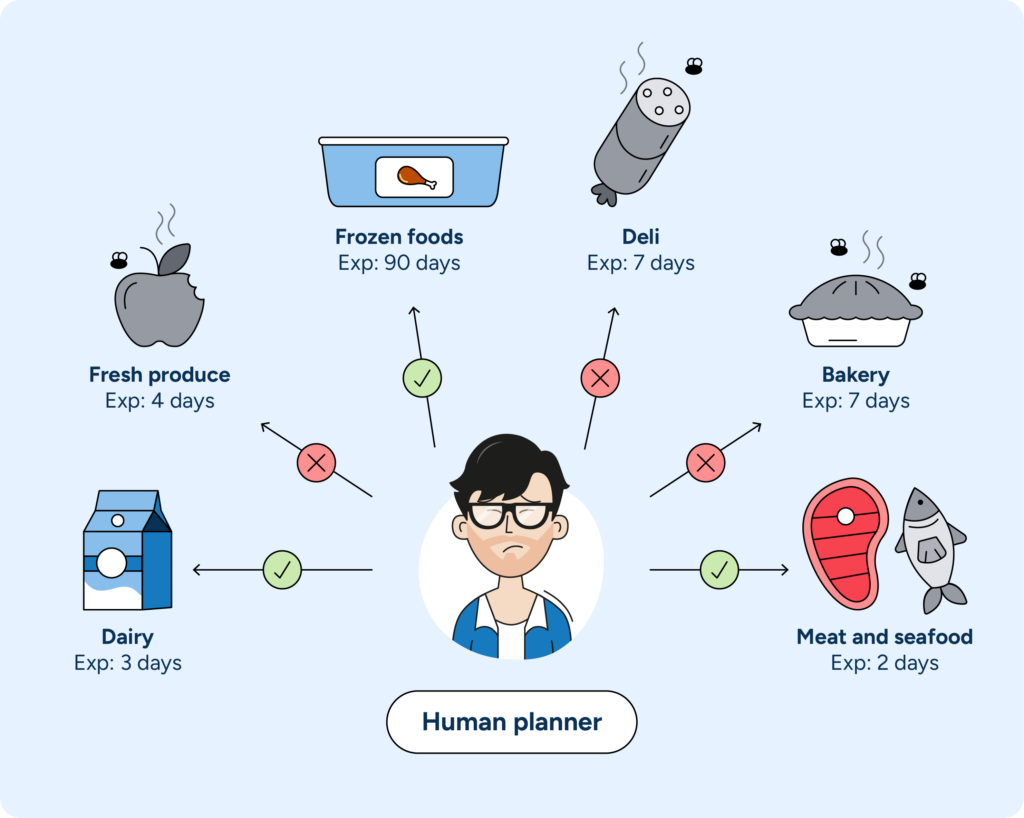
Each product exhibits different perishability, pricing, and promotional behaviors. This is more data than Tori can manage with spreadsheets.
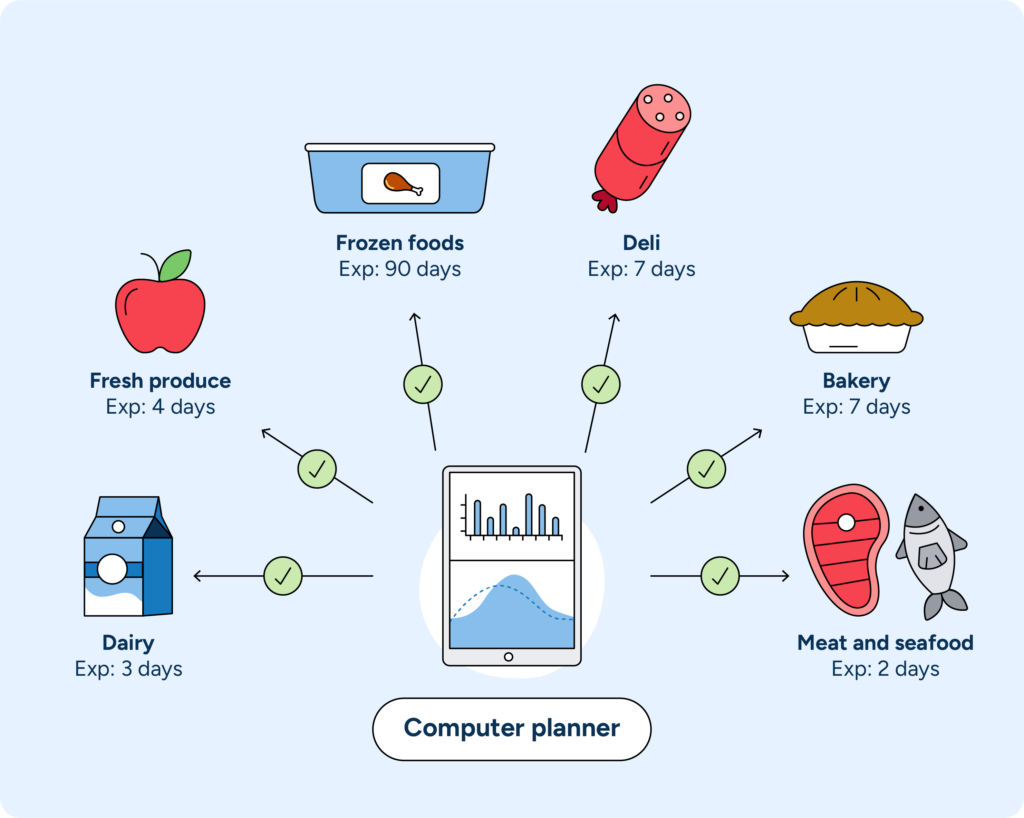
With AI doing the heavy lifting, Tori can manage by exception and attend to the alerts and anomalies that require human judgment calls. She gets the advantage of rapid, AI-driven data analysis while still maintaining control of her optimization process.
Automated replenishment and inventory management
Using the AI-powered forecast to guide its calculations, Tori’s automated replenishment system generates intelligent replenishment orders and allocations.
By understanding expected demand, planned inventory levels, and supplier availability, the solution can identify supplier price breaks, discounts, and bulk ordering opportunities, reducing overall costs.
Plus, like machine learning, automation enables Tori’s team to delegate repetitive grunt work to the system, so they can focus their expertise where it is most needed.
Storage and space optimization capabilities
Enhanced visibility and automated replenishment also help optimize storage and space use, communicating changes in store product portfolios and accounting for capacity needs, delivery and resource requirements, and supply restrictions.
For example, suppose another team in Tori’s organization has reduced the store count for a particular product from 600 stores to 400.
Tori has visibility into this decision and, therefore, isn’t planning for an extra 200 stores, avoiding costly waste. She knows which products should be heading to which stores, so she can plan the inventory levels that will best achieve on-shelf availability without overloading DCs or back rooms.
Moreover, the team can use this information to smooth store deliveries, scheduling them throughout the week to reduce bottlenecks, lower costs, and free up store associates for more customer service-oriented tasks.
Intuitive tools and configurability
Tech implementations are an investment — of time, money, and resources.
Tori selects an adaptable solution with a user-friendly interface and intuitive dashboards to improve efficiency and increase user adoption.
Plus, Tori’s future-proof system allows for easy configuration, meaning the team can configure and alter business rules independently – avoiding the cost and time associated with rewriting code.
It also separates the configuration layer from the software application for easy upgrades with minimal business interruption.
In this way, the company can keep growing while adapting quickly to marketplace changes.
With the intelligent application of technology, integration of functions, and smart use of data, Tori optimizes her inventory and drives the process and business benefits she laid out at the beginning of her optimization journey.
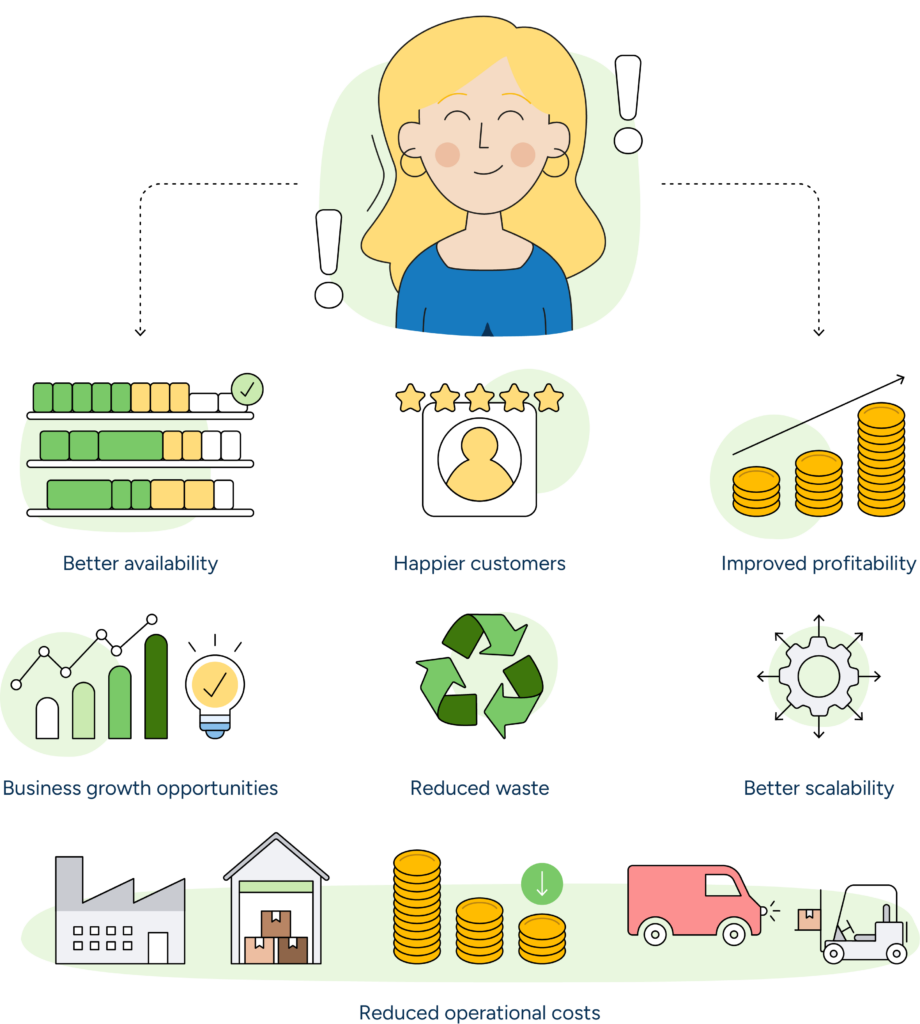
How RELEX helps organizations achieve inventory optimization
Tori may be a hypothetical person, but the results gained from smart inventory optimization are not.
Take, for instance, Europris, Norway’s largest discount variety retailer, who partnered with RELEX to develop an inventory optimization strategy focused on enhanced visibility.
“Before we implemented RELEX, it was difficult for us to measure things like availability other than by going out to stores to take a look or by monitoring customer complaints,” said Marco Pair, Supply Chain Manager, Europris. “We were being told that our campaign items had sold out even though they were still being advertised. That sort of thing inevitably has an impact on customer loyalty.”
By improving supply chain and inventory visibility, Pair’s teams achieved significantly more accurate replenishment, demand forecasting, and campaign management. Inventory levels fell sharply, availability rose dramatically, and Europris’s ability to plan its logistics and staffing requirements improved markedly.
Getting started with the right partner
If you’re looking to optimize your inventory, start by identifying your main challenges. Is your network clogged with bottlenecks? Are you plagued with overstock, or are you struggling to keep high-demand items on shelves? Are departments able to communicate easily with each other? Does your team have the technology they need to make optimal inventory decisions? Identify the most critical goals and highlight your roadmap milestones.
And remember — when it comes to choosing a solution, the technology is only one piece of the puzzle; the best strategies are backed by the right technology partner that can guarantee successful implementation and provide the most cutting-edge solutions with continuing ROI.
With RELEX, you can join the hundreds of customers who have improved efficiency, profitability, and customer service while boosting and future-proofing their supply chain performance.
Inventory optimization FAQs
What is inventory optimization?
Inventory optimization is a strategy that gets inventory to the right place at the right time to meet demand and boost profit with minimal inventory investment.
What are the major challenges to overcome when optimizing inventory?
Achieving optimal inventory levels is complicated by a variety of obstacles, including:
- Lack of digital transformation and investment in the proper technological solutions
- Dramatic and rapid demand shifts
- Increasing competition and disruption
- Expansive product portfolios with complex demand patterns
- Prices that fluctuate based on available supply
What solutions form the pillar of a successful inventory optimization strategy?
Manufacturers and retailers need the following capabilities to optimize inventory:
- Unified data sharing that enables intelligent, collaborative end-to-end planning.
- AI-driven forecasting that uses machine learning to calculate accurate, granular forecasts despite demand variability.
- Replenishment and inventory planning automation that compiles and analyzes data for actionable insights and reduces strain on planning teams
- Storage and space optimization that communicates important business decisions to inventory planners, reducing bottlenecks and improving on-shelf availability.
- Configurable planning platforms for easy user adoption and future-proof adaptability.
What are the benefits of inventory optimization?
With intelligent inventory optimization, powered by the right technology and best practices, companies can achieve:
- Better availability and higher customer satisfaction
- Improved profitability
- ROI reinvestment opportunities
- Reduced waste
- Enhanced visibility
- Reduced operational costs
- Better scalability

